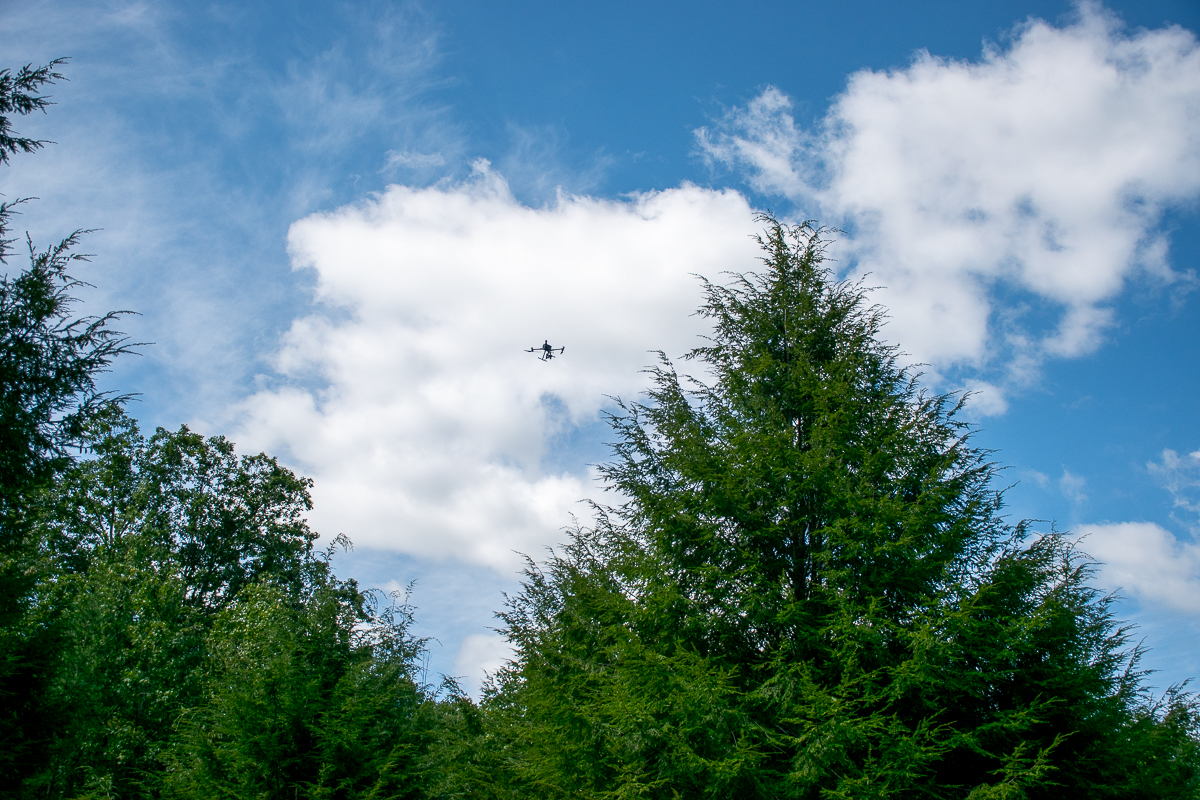
A reproductively mature Eastern hemlock seed orchard grows in the Forest Resources AgResearch and Education Center, Cumberland Forest unit. The trees grew from seeds procured by the UT Tree Improvement Program and cooperators in 1995 after they were collected from the Great Smoky Mountains National Park and other high-elevation sites in the southern Appalachian Mountains.
The hemlocks grew in containers for years until they were large enough for field planting in 2001 as a genetic test. The test was thinned in 2022 to develop a seed orchard, which yields locally adapted seed for higher elevations in the region. Certain trees in the orchard have been cloned by rooting cuttings. They were planted from 2023-2025 to expand the orchard and increase seed production.
In August, research associates Ami Sharp and Allison Mains flew drones over the seed orchard to survey it for cones after a visual survey was conducted earlier in the summer. They plan on comparing the two surveys to determine seed crop size ahead of seed collection in mid-to-late September. All seed from the orchard will go to the East Tennessee State Nursery to grow for landowners in the southern Appalachian Mountains.
UT-TIP began the hemlock seed orchard project in response to the nonnative hemlock woolly adelgid, which has decimated populations of hemlocks throughout the eastern U.S. Although the orchard trees are not resistant to hemlock woolly adelgid, seedlings from the trees can be used for restoration once conservation agencies develop successful mitigation procedures for the forest pest.
